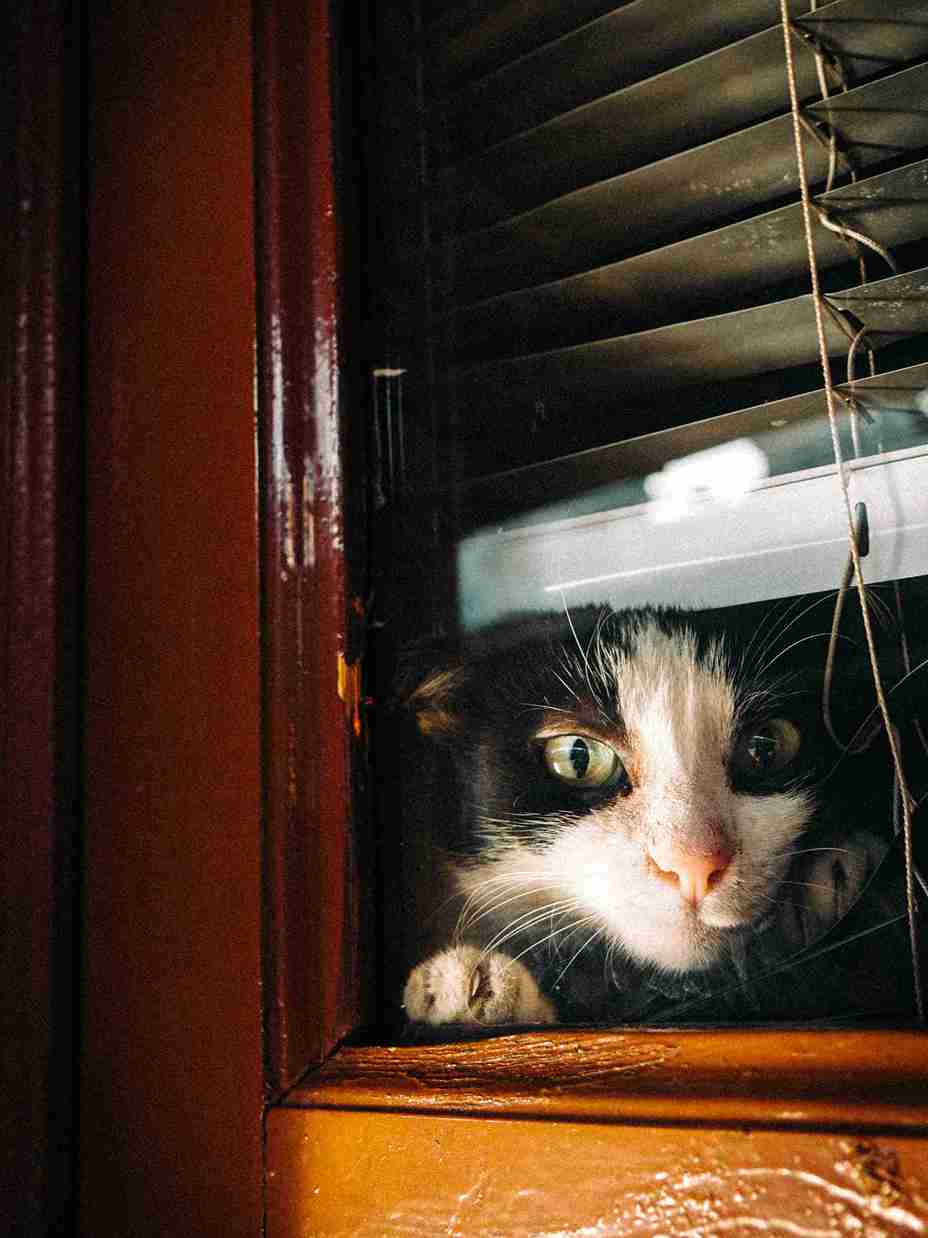Can Indoor Cats Really Get Fleas?
Many cat owners believe that keeping their cats inside stops fleas completely. While indoor cats are generally safer than outdoor cats, this is not entirely true. Fleas are tiny, persistent parasites that can enter your home in surprising ways. Even indoor cats can scratch, bite, and get fleas if you don’t take precautions.
To see how indoor cats get fleas, look for early signs and learn how to prevent them. This knowledge is essential. Indoor cats aren’t immune. They still face risks, especially from fleas and infestations.
How Do Indoor Cats Get Fleas?
Even indoor cats can fall victim to fleas, and the main culprits are usually small, unnoticed entry points. Here’s how fleas can make their way into your home and onto your cat:
1. Hitchhiking Fleas on Humans and Other Pets
Fleas can attach themselves to humans, dogs, or other pets that go outside. When these carriers come indoors, fleas can jump onto your indoor cat. Even brief contact can start an infestation.
2. Fleas Entering Through Doors and Windows
Fleas are excellent jumpers and can slip through small gaps in doors or open windows. A brief opening on a warm day may allow fleas from the yard or neighboring areas to enter your home.
3. Flea Eggs in Bedding and Carpets
Flea eggs or larvae may already be present in carpets, rugs, or pet bedding. These tiny eggs are often invisible until they hatch, leading to your cat scratching excessively.
4. Contact with Objects or Secondhand Items
Indoor cats may sit on furniture, carpets, or bedding that have flea eggs. Even a brief encounter with these objects can introduce fleas into your home.
5. Other Pets in the Household
Dogs or other cats that go outdoors can carry fleas into the home. Indoor cats sharing the same environment may become hosts to these fleas even if they never leave the house.

Signs Your Indoor Cat Has Fleas
Many cat owners think that if their indoor cat isn’t scratching constantly, fleas aren’t an issue. This is a misconception. Fleas can quietly infest indoor cats at first. Often, subtle signs go unnoticed until the problem gets severe. Knowing the early indicators helps prevent discomfort and health problems for your cat.
1. Physical Signs
- Fleas can irritate a cat’s skin. This makes them scratch, bite, or lick their fur more often.
- Red bumps and irritation: Flea bites can appear as small red dots, often around the neck, tail, or belly.
- Hair loss or thinning fur: Persistent scratching can lead to patches of missing fur.
- Flea dirt: Tiny black specks in your cat’s coat, often mistaken for dirt, are actually flea faeces.
2. Behavioural Signs
- Restlessness or increased activity at night.
- Constant grooming or licking of specific areas.
- Sudden changes in temperament, such as irritability or hiding, occur.
Flea Prevention Tips for Indoor Cats
Some cat owners think that indoor cats never need flea prevention. That’s a common mistake. Even indoor cats face risks, so preventive care is key. This helps avoid scratching, skin irritation, and health problems.
1. Routine grooming and inspection
- Regular brushing helps to remove loose hair, flea dirt, and eggs.
- Use a flea comb to check for tiny parasites.
- Grooming also strengthens the bond between you and your cat.
2. Flea medications and treatments
- Topical drops: effective monthly protection against fleas.
- Oral medications: quick-acting treatments for active infestations.
- Flea collars: Long-lasting protection, especially for multi-pet households.
3. Home Environment Hygiene
- Wash pet bedding, blankets, and soft toys regularly.
- Vacuum carpets, rugs, and furniture to remove eggs and larvae.
- Use pet-safe sprays if needed, especially in areas that your cat frequents.
4. Limiting Flea Access Points
- Keep windows and doors properly screened.
- Check any other pets that go outdoors.
- Be cautious with second-hand furniture or carpets.
Natural and Home Remedies for Flea Control
Many cat owners assume that chemical treatments are the only way to keep indoor cats flea-free. That’s a common misconception. There are safe, natural ways to reduce flea infestations. This is great for cats that are sensitive to chemicals.
1. Safe Natural Remedies
- Diatomaceous Earth (Food Grade): Sprinkle lightly on carpets or pet bedding. It dehydrates fleas without harming cats.
- **Pet-Safe Flea Sprays:** Select natural sprays that include neem, pet-safe eucalyptus, or various herbs.
- Apple Cider Vinegar: A diluted solution can be lightly applied to the fur to repel fleas, but always avoid contact with eyes.
2. Grooming and Hygiene
- Regular brushing and combing can remove flea dirt, eggs, and live fleas before they become a serious problem.
- Bathe your cat occasionally with flea-safe shampoos to keep the coat clean.
Flea Allergy and Health Risks
Many people think fleas are only a minor annoyance. Flea infestations can cause serious health problems if not dealt with quickly.
1. Flea Allergy Dermatitis
- Some cats can be allergic to flea saliva. This reaction leads to intense itching, red bumps, and hair loss.
- Continuous scratching may lead to secondary skin infections.
2. Anaemia in Kittens and Older Cats
- Heavy infestations can lead to blood loss. This causes weakness or anaemia, especially in kittens and older cats.
3. Other Health Concerns
- Fleas can carry tapeworms and other parasites. If your cat ingests them while grooming, it may get infected.
Regular prevention and monitoring significantly reduce these risks
What Your Vet Will Check & Diagnose
Many cat owners assume that if their indoor cat is scratching or showing signs of fleas, it’s not a serious problem. A flea infestation can show hidden health issues, so it’s best to get a professional evaluation.
When you take your cat to the vet for flea problems or persistent scratching, here’s what they typically check:
1. Physical Examination
- The vet inspects the coat, skin, and common flea hotspots like the neck, tail, and belly.
- They look for flea dirt, bite marks, and irritated skin.
2. Blood Work
- Blood tests may be conducted to check for anemia or infections caused by heavy flea infestations.
- This is especially important for kittens or older cats, who are more vulnerable.
3. Urinalysis and Other Tests
- If your cat has secondary issues, such as stress-related symptoms, the vet may recommend additional tests.
- Imaging or other diagnostics are rarely needed but can help rule out other health complications.
Home Care Tips While You Wait for the Vet
Many owners think there’s nothing they can do at home while waiting for a vet appointment. That’s not true. With a few simple steps, you can support your cat, reduce discomfort, and minimise flea spread.
1. Maintain cleanliness.
- Wash bedding, blankets, and soft toys in hot water.
- Vacuum the carpets, furniture, and areas that your cat frequents.
2. Keep your cat comfortable.
- Provide a calm, stress-free environment.
- Use cosy bedding and hiding spots to help your cat feel secure.
3. Support hydration and nutrition
- Provide fresh water and quality wet food. This helps your cat stay healthy while dealing with flea irritation.
4. Monitor Behavior and Symptoms
- Keep track of scratching, licking, and flea visibility.
Record any signs to provide the vet with detailed information for faster diagnosis and treatment.
Conclusion: Keep Your Indoor Cat Flea-Free
Many cat owners think indoor cats are safe from fleas, but that’s a common myth. Indoor cats are at less risk than outdoor cats, but fleas can still get in. So, prevention is important. Realising that indoor cats can also get fleas is the first step to keeping your cat safe.
Proactive prevention is key.
- Regular grooming: Use a flea comb and brush your cat’s fur to detect fleas or flea dirt early.
- Flea Control Treatments: Follow vet-recommended topical drops, collars, or oral medications.
- Home hygiene: Wash your bedding. Vacuum the carpets. Clean the spots where your cat hangs out. This helps reduce flea eggs and larvae.
Routine vet consultations
Even if your cat appears healthy, regular vet check-ups are important. Your vet can:
- Detect early signs of fleas or skin irritation.
- Recommend preventive treatments based on your cat’s environment and age.
- Ensure your cat stays comfortable, healthy, and stress-free.
Final Takeaway
Fleas are more than a nuisance—they can affect your cat’s comfort and health.
To keep your indoor cat safe from pests, you should:
- Prevent issues
- Groom regularly
- Visit the vet
- Provide proper care


Leave a Reply